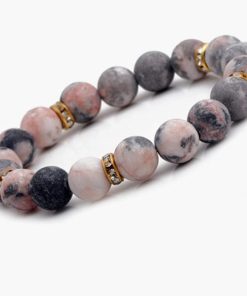The Principle of Expansion for Crystal Gel Babies
The Fascinating Expansion Principle of Water Beads and Its Educational Applications
Water beads, those colorful and elastic little objects, owe their expansion principle to a magical substance known as “superabsorbent polymer” (Superabsorbent Polymer, abbreviated as SAP). SAP is a type of high molecular polymer whose molecular structure contains numerous hydrophilic groups. These groups act like tiny magnets, capable of forming hydrogen bonds with water molecules and firmly attracting them.
When SAP comes into contact with water, these hydrophilic groups spring into action, rapidly adsorbing surrounding water molecules and locking them between polymer chains to form an intricate network structure. This process is akin to a small sponge rapidly swelling upon contact with water, firmly retaining the water molecules within. In water beads, this characteristic of SAP is fully harnessed, enabling them to swell rapidly upon contact with water, becoming plump and elastic.
Delving deeper into the water absorption process of SAP, we find that the interaction between hydrophilic groups and water molecules is key. These groups form hydrogen bonds with water molecules, like invisible hands firmly gripping them and guiding them into the gaps between polymer chains. As water molecules continue to enter, the volume of SAP gradually expands, forming a gel-like network structure. This network structure is highly stable, capable of firmly locking water molecules within and maintaining the swelling effect of SAP for an extended period.
It is worth noting that the expansion process of water beads is actually a physical change, not a chemical one. During this process, SAP itself does not decompose or alter its chemical composition; it simply absorbs a large amount of water molecules, leading to volume expansion. This is why water beads can reabsorb water and swell again after drying. This reversibility makes water beads a highly interesting experimental material that can be reused to explore their various properties.
Different types of SAP possess varying water absorption capacities, with some capable of absorbing hundreds of times their own weight in water. In water beads, SAP with high water absorption capacity is typically used, allowing them to swell to a very large volume and become an eye-catching experimental material.
Here is a detailed description of the characteristics of the expansion principle of water beads:
| Characteristic | Description |
|---|---|
| Principle | The expansion of water beads mainly relies on superabsorbent polymer (SAP), a high molecular polymer containing numerous hydrophilic groups. |
| Water Absorption Process | Hydrophilic groups form hydrogen bonds with water molecules, attracting and locking them between polymer chains to form a network structure, leading to volume expansion. |
| Analogy | SAP molecules are like sponges, absorbing large amounts of liquid, with water molecules adsorbed onto the chains to form a gel-like network that locks in water molecules. |
| Type of Change | The swelling process is a physical change; SAP does not decompose or alter its chemical composition; it simply absorbs water and expands in volume. |
| Reversibility | After drying, SAP can reabsorb water and swell again. |
| Water Absorption Capacity | Different types of SAP have varying water absorption capacities; some can absorb hundreds of times their own weight in water. |
In addition to exploring their expansion principle, the combination of water beads and small bottles can also reveal more fascinating scientific phenomena. For example, by placing water beads in a bottle filled with water, we can observe how their volume changes with water temperature. When the water temperature rises, the water beads absorb water and swell, increasing in volume; when the water temperature drops, they release water and shrink in volume. This simple experiment allows us to intuitively understand the principle of thermal expansion and contraction.
Teachers can fully utilize the combination of water beads and small bottles to design various creative experiments, guiding students in inquiry-based learning. For example, students can be asked to predict how the volume of water beads will change at different temperatures and design experiments to verify their predictions. They can also observe how the volume of different types of water beads changes under the same conditions and explore the reasons behind it. These experiments not only help students deeply understand scientific principles but also cultivate their observational skills, thinking abilities, and experimental design capabilities.
It is important to note that when conducting water bead experiments, we should focus on the process rather than the outcome. We should not overcrowd the experiments or rush students to complete them all at once. Instead, we should encourage them to observe carefully, predict actively, design experiments meticulously, conduct them hands-on, and express their opinions boldly. Letting students explore the process gradually will help them understand scientific principles and cultivate their scientific literacy and innovative spirit. Only in this way can we truly maximize the value of water beads as an experimental material and add more fun and gains to students’ scientific learning journey.

 Rose Quartz Healing for Women Anxiety Crystal Bracelet
Rose Quartz Healing for Women Anxiety Crystal Bracelet
Rose Quartz Healing for Women Anxiety Crystal Bracelet
$29.00Original price was: $29.00.$23.00Current price is: $23.00.